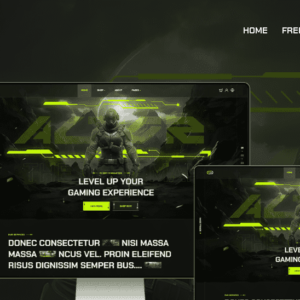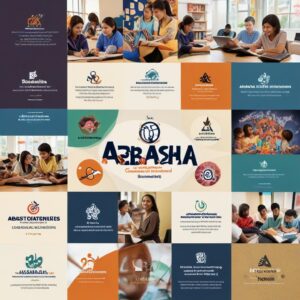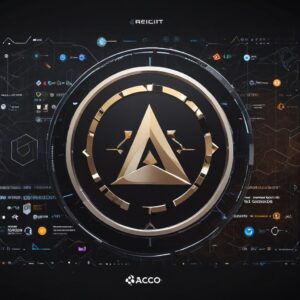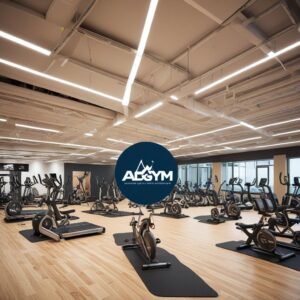
Top Free Prompt to AI Image Generators for Social Media in 2024
Prompt to AI Image Generators for Social Media
Introduction
AI image generators have emerged as a game-changing tool for social media content creators. These sophisticated algorithms can generate stunning visuals based on textual descriptions, or “prompts.” By simply providing a prompt, you can unleash the power of AI to create unique and captivating images that can enhance your social media presence.

For instance, if you want to create an image of a futuristic cityscape, you could provide the prompt “a neon-lit metropolis with towering skyscrapers and flying cars.” The AI would then generate a visually impressive image that aligns with your description. This ability to transform text into visuals offers endless possibilities for content creators looking to stand out from the crowd.
Diving Deeper into DALL-E 2: A Comprehensive Overview
DALL-E 2 is a groundbreaking artificial intelligence system developed by OpenAI that has revolutionized the field of digital art. Its ability to generate highly realistic and detailed images based on text descriptions is a testament to the advancements in machine learning.
How DALL-E 2 Works:
- Text-to-Image Generation: When a user provides a text prompt, DALL-E 2 processes the language and identifies the key concepts, attributes, and relationships. It then leverages its vast dataset of images and text to generate corresponding visual representations.
- Neural Network Architecture: DALL-E 2 is built on a neural network architecture that is specifically designed for image generation. This network allows the AI to learn complex patterns and relationships between text and visuals.
- Generative Models: DALL-E 2 utilizes generative models, which are algorithms that can create new data based on existing patterns. These models enable the AI to generate diverse and creative images.
Applications of DALL-E 2:
- Creative Design: Artists and designers can use DALL-E 2 to generate concept art, explore new visual styles, and create unique illustrations.
- Content Creation: Content creators can use DALL-E 2 to generate images for blog posts, social media, and other marketing materials.
- Research and Development: Scientists and researchers can use DALL-E 2 to visualize complex data or explore new scientific concepts.
Ethical Considerations:
- Misinformation: DALL-E 2 can be used to create deepfakes or misleading images, which can have serious consequences.
- Copyright Infringement: Generating images that closely resemble existing copyrighted works can raise legal concerns.
- Bias: The training data used to develop DALL-E 2 may contain biases, which can influence the generated images.
The Future of DALL-E 2:
As AI technology continues to advance, we can expect to see even more impressive capabilities from DALL-E 2 and similar systems. Future developments may include the ability to generate more complex and detailed images, as well as the integration of DALL-E 2 with other AI tools and applications.
Craiyon: A Free and Accessible Alternative to DALL-E 2
Craiyon, formerly known as DALL-E Mini, is a groundbreaking artificial intelligence system that has gained significant popularity as a free and accessible alternative to DALL-E 2. This powerful tool can generate stunningly realistic images and artwork based on text descriptions, offering a wide range of creative possibilities for artists, designers, and enthusiasts alike.
How Craiyon Works:
Craiyon’s underlying technology is similar to DALL-E 2, utilizing a neural network architecture trained on a massive dataset of text-image pairs. When a user enters a text prompt, the AI analyzes the language and identifies the key concepts, attributes, and relationships. It then leverages its vast knowledge base to generate corresponding visual representations.
Craiyon’s ability to understand and interpret natural language is remarkable. It can generate images based on a wide range of descriptions, from simple keywords to detailed narratives. The system is capable of producing a variety of artistic styles, from realistic to abstract, and can even create images that blend elements from different genres or time periods.
Key Features of Craiyon:
- Free and Accessible: Unlike DALL-E 2, which requires a subscription, Craiyon is completely free to use. This accessibility has made it a popular choice for individuals and organizations with limited budgets.
- Open-Source: Craiyon’s open-source nature has fostered a vibrant community of developers and enthusiasts who contribute to its ongoing development. This community-driven approach ensures that Craiyon remains free and accessible while also benefiting from constant improvements and updates.
- Diverse Output: Craiyon can generate a wide range of image styles, from realistic to abstract, and can create images based on a variety of subjects. This versatility makes it a valuable tool for artists and designers who are looking to explore new creative possibilities.
- Ease of Use: Craiyon is easy to use, even for those with limited technical knowledge. Users simply need to enter a text prompt and wait for the AI to generate the corresponding image.
Applications of Craiyon:
Craiyon has a wide range of applications, including:
- Creative Design: Artists and designers can use Craiyon to generate concept art, explore new visual styles, and create unique illustrations.
- Content Creation: Content creators can use Craiyon to generate images for blog posts, social media, and other marketing materials.
- Education: Educators can use Craiyon to create visual aids for lessons or to help students develop their creativity.
- Research: Researchers can use Craiyon to visualize complex data or to explore new scientific concepts.
Limitations and Considerations:
While Craiyon is a powerful tool, it is important to note that it may not always produce the same level of quality or realism as DALL-E 2. Additionally, the free nature of Craiyon means that users may encounter occasional server load or wait times.
It is also important to consider the ethical implications of using AI-generated art. While Craiyon can be a valuable tool for creative expression, it is essential to use it responsibly and to be aware of its potential limitations.
Ethical Considerations:
- Copyright Infringement: Generating images that closely resemble existing copyrighted works can raise legal concerns.
- Misinformation: Craiyon can be used to create deepfakes or misleading images, which can have serious consequences.
- Bias: The training data used to develop Craiyon may contain biases, which can influence the generated images.
Future Developments:
Craiyon is a rapidly evolving technology, and we can expect to see significant advancements in its capabilities in the coming years. Future developments may include:
- Improved Image Quality: Craiyon may be able to generate even more realistic and detailed images.
- Expanded Functionality: Craiyon may be integrated with other AI tools or applications to offer additional features and capabilities.
- Ethical Considerations: As AI technology continues to advance, it will be important to address ethical concerns related to its use.
Craiyon is a groundbreaking AI-driven image generator that offers a free and accessible alternative to DALL-E 2. Its ability to generate stunningly realistic images based on text descriptions has made it a popular choice for artists, designers, and enthusiasts alike. While it may have some limitations, Craiyon’s versatility and ease of use make it a valuable tool for a wide range of application.

Stable Diffusion: A Deep Dive into AI-Powered Image Generation
Introduction
Stable Diffusion, a text-to-image model, has rapidly gained popularity due to its ability to generate high-quality images from simple text descriptions. This powerful tool has democratized image creation, enabling individuals with varying levels of artistic skill to produce visually stunning results. In this comprehensive exploration, we will delve into the intricacies of Stable Diffusion, examining its architecture, applications, and the ethical considerations surrounding its use.
Understanding Stable Diffusion
At its core, Stable Diffusion is a generative adversarial network (GAN) trained on a massive dataset of images and text pairs. This training process equips the model with the ability to understand the relationship between textual descriptions and visual representations. When presented with a text prompt, Stable Diffusion generates an image that closely aligns with the provided description.
1. Diffusion Models Trained with Large Data Are Transferable Visual Models – arXiv
The Architecture of Stable Diffusion
The architecture of Stable Diffusion consists of two primary components: the diffusion model and the U-Net.
- Diffusion Model: This component is responsible for generating random noise and gradually transforming it into a meaningful image. The process involves adding noise to an image in multiple steps, then using the model to denoise the image at each step.
The Training Process
Training Stable Diffusion involves a complex process that involves exposing the model to a vast dataset of images and their corresponding text descriptions. The model learns to associate specific textual features with visual elements, enabling it to generate images that accurately reflect the provided prompts.
Applications of Stable Diffusion
The versatility of Stable Diffusion has led to its adoption in various fields:
- Art and Design: Artists and designers can use Stable Diffusion to create unique and visually striking artwork, explore new creative directions, and experiment with different styles. 1. How to Use Stable Diffusion to Create Unique Visual Content – Verpex
- Game Development: Game developers can leverage Stable Diffusion to generate concept art, character designs, and environment textures, accelerating the development process.
- Product Design: Industrial designers can use the model to visualize product concepts and iterate on designs quickly. 1. How to use Stable Diffusion to generate product images – Mercity AI
- Education and Research: Stable Diffusion can be used for educational purposes, allowing students to explore the principles of AI and image generation. Additionally, researchers can employ the model to study various aspects of computer vision and artificial intelligence.
- Entertainment: The entertainment industry has embraced Stable Diffusion for creating visual effects, generating content for virtual worlds, and producing personalized experiences.
- Fashion and Apparel: Fashion designers can use Stable Diffusion to generate new fabric patterns, clothing designs, and accessories. 1. GenAI in Fashion | A Segmind Stable Diffusion XL 1.0 Approach – Analytics Vidhya
- Interior Design: Interior designers can use the model to create virtual spaces and visualize different design options.
- Advertising and Marketing: Advertisers can use Stable Diffusion to create visually appealing advertisements and marketing materials. 1. AI’s Creative Alchemy: Transforming Social Media Ads with Stable Diffusion
- Scientific Visualization: Scientists can use the model to visualize complex data and create informative graphics.
Ethical Considerations
While Stable Diffusion offers numerous benefits, it is essential to address the ethical implications of its use:
- Bias and Discrimination: The training data used to develop Stable Diffusion can inadvertently introduce biases into the model’s outputs. For example, if the training data contains stereotypes or discriminatory content, the model may generate images that perpetuate these biases.
- Misinformation and Deepfakes: Stable Diffusion can be used to create deepfakes, which are highly realistic but fabricated images or videos that can be used to spread misinformation or harm individuals. 1. Generative AI is the ultimate disinformation amplifier – DW Akademie
- Copyright Infringement: If Stable Diffusion is used to generate images that closely resemble copyrighted works, it could lead to legal issues. 1. What’s wrong with this picture? AI-created images and content: copyright ownership and infringement – Clifford Chance
- Privacy Concerns: The use of Stable Diffusion to generate images based on personal data raises concerns about privacy and data protection.
- Environmental Impact: The training and deployment of large-scale AI models like Stable Diffusion can have a significant environmental impact due to the energy consumption required.
Future Directions
As research and development in the field of AI continue to advance, we can expect to see further improvements in Stable Diffusion and the development of new text-to-image models with even more impressive capabilities. Some potential future directions include:
- Enhanced Control: Developing methods to provide users with greater control over the generated images, allowing them to specify specific details or styles.
- Improved Realism: Enhancing the model’s ability to generate highly realistic and photorealistic images.
- Multimodal Inputs: Exploring the possibility of using multiple modalities, such as text, audio, or video, as inputs to generate more diverse and complex outputs.
- Ethical Frameworks: Developing ethical frameworks and guidelines to ensure the responsible and equitable use of Stable Diffusion.
- Integration with Other AI Technologies: Combining Stable Diffusion with other AI technologies, such as natural language processing and computer vision, to create even more powerful and versatile applications.
Technical Details
For those interested in the technical aspects of Stable Diffusion, here is a more in-depth explanation of its architecture and training process:
- Diffusion Model: The diffusion model is based on the concept of reverse diffusion, which involves starting with a random noise image and gradually adding information to it until it resembles a meaningful image. This process is achieved by using a series of denoising steps, where the model predicts the noise that needs to be removed from the image at each step. 1. What Are Diffusion Models?
- U-Net: The U-Net is a convolutional neural network architecture that is particularly well-suited for image-to-image tasks. It consists of an encoder part that downsamples the input image and a decoder part that upsamples the features to reconstruct the original image. The U-Net also incorporates skip connections between the encoder and decoder layers, which help to preserve fine-grained details. 1. Intuitive Explanation of Skip Connections in Deep Learning – AI Summer
- Training Process: The training process involves minimizing a loss function that measures the difference between the predicted noise and the actual noise in the image. This is typically done using gradient descent optimization.
Advanced Techniques
In addition to the basic architecture, several advanced techniques can be used to improve the performance of Stable Diffusion:
- Conditional Generation: By providing additional information, such as a style guide or a specific object to include in the image, the model can generate more targeted and controlled results.
- Super-Resolution: Stable Diffusion can be used to increase the resolution of low-resolution images, producing higher-quality results. 1. Stable Diffusion: The Future of Image Upscaling – Neuroflash
- Text-Guided Image Editing: The model can be used to edit existing images based on text prompts, allowing users to modify specific elements or styles.
- Style Transfer: Stable Diffusion can be used to transfer the style of one image onto another, creating unique and visually interesting compositions. 1. Towards Highly Realistic Artistic Style Transfer via Stable Diffusion with Step-aware and Layer-aware Prompt – arXiv
- Image-Guided Image Generation: By providing a reference image as input, the model can generate images that are similar to the reference image but with different details or variations.
Real-World Applications
Stable Diffusion has found applications in a wide range of fields:
- Art and Design: Artists and designers can use Stable Diffusion to explore new creative directions, experiment with different styles, and create unique and visually striking artwork.
- Game Development: Game developers can leverage Stable Diffusion to generate concept art, character designs, and environment textures, accelerating the development process.
- Product Design: Industrial designers can use the model to visualize product concepts and iterate on designs quickly. 1. How to use Stable Diffusion to generate product images
- Education and Research: Stable Diffusion can be used for educational purposes, allowing students to explore the principles of AI and image generation. Additionally, researchers can employ the model to study various aspects of computer vision and artificial intelligence.
- Entertainment: The entertainment industry has embraced Stable Diffusion for creating visual effects, generating content for virtual worlds, and producing personalized experiences.
- Fashion and Apparel: Fashion designers can use Stable Diffusion to generate new fabric patterns, clothing designs, and accessories. 1. GenAI in Fashion | A Segmind Stable Diffusion XL 1.0 Approach – Analytics Vidhya
- Interior Design: Interior designers can use the model to create virtual spaces and visualize different design options.
- Advertising and Marketing: Advertisers can use Stable Diffusion to create visually appealing advertisements and marketing materials. 1. AI’s Creative Alchemy: Transforming Social Media Ads with Stable Diffusion
- Scientific Visualization: Scientists can use the model to visualize complex data and create informative graphics.
Ethical Considerations
While Stable Diffusion offers numerous benefits, it is essential to address the ethical implications of its use:
- Bias and Discrimination: The training data used to develop Stable Diffusion can inadvertently introduce biases into the model’s outputs. For example, if the training data contains stereotypes or discriminatory content, the model may generate images that perpetuate these biases.
- Misinformation and Deepfakes: Stable Diffusion can be used to create deepfakes, which are highly realistic but fabricated images or videos that can be used to spread misinformation or harm individuals. 1. Generative AI is the ultimate disinformation amplifier – DW Akademie
- Copyright Infringement: If Stable Diffusion is used to generate images that closely resemble copyrighted works, it could lead to legal issues. 1. What’s wrong with this picture? AI-created images and content: copyright ownership and infringement – Clifford Chance
- Privacy Concerns: The use of Stable Diffusion to generate images based on personal data raises concerns about privacy and data protection.
- Environmental Impact: The training and deployment of large-scale AI models like Stable Diffusion can have a significant environmental impact due to the energy consumption required.
Future Directions
As research and development in the field of AI continue to advance, we can expect to see further improvements in Stable Diffusion and the development of new text-to-image models with even more impressive capabilities. Some potential future directions include:
- Enhanced Control: Developing methods to provide users with greater control over the generated images, allowing them to specify specific details or styles.
- Improved Realism: Enhancing the model’s ability to generate highly realistic and photorealistic images.
- Multimodal Inputs: Exploring the possibility of using multiple modalities, such as text, audio, or video, as inputs to generate more diverse and complex outputs.
- Ethical Frameworks: Developing ethical frameworks and guidelines to ensure the responsible and equitable use of Stable Diffusion.
- Integration with Other AI Technologies: Combining Stable Diffusion with other AI technologies, such as natural language processing and computer vision, to create even more powerful and versatile applications.
- Real-Time Generation: Optimizing Stable Diffusion for real-time image generation, enabling its use in interactive applications and virtual reality experiences.
- Customization and Personalization: Developing tools and techniques to allow users to customize Stable Diffusion to their specific needs and preferences, creating more personalized and tailored results.
- Accessibility: Ensuring that Stable Diffusion is accessible to individuals with disabilities, by providing features such as alternative text and audio descriptions.
- Stable Diffusion represents a significant advancement in the field of AI-powered image generation. Its ability to generate high-quality images from text descriptions has opened up new possibilities for artists, designers, researchers, and businesses alike. While ethical considerations must be carefully addressed, the potential benefits of Stable Diffusion are vast. As the technology continues to evolve, we can anticipate even more exciting and innovative applications in the years to come.
Top Free AI Image Generators: Unleash Your Creativity
Prompt to AI image generators has become a powerful tool for artists, designers, and enthusiasts alike. These innovative platforms leverage advanced algorithms to transform text descriptions into stunning visuals. Let’s explore some of the most popular free options:
Midjourney
Renowned for its ability to produce highly detailed and artistic images, Midjourney offers a user-friendly interface and a vast community. Simply input your desired prompt and watch as the AI generates a variety of captivating results.
Stable Diffusion
This open-source platform provides exceptional flexibility and customization options. With Stable Diffusion, you can fine-tune the AI’s output to match your specific vision. Experiment with different prompts and discover the endless possibilities.
DALL-E 2
Developed by OpenAI, DALL-E 2 excels at creating photorealistic images and artistic illustrations. Its ability to understand and interpret complex prompts makes it a versatile choice for a wide range of creative projects.
NightCafe Creator
NightCafe Creator offers a diverse range of artistic styles and techniques. From impressionism to surrealism, you can explore various prompts and discover unique visual interpretations.
Jasper.ai
While primarily known for its AI writing capabilities, Jasper.ai also includes an image generation feature. By providing a detailed prompt, you can generate creative visuals that complement your written content.
By leveraging these free AI image generators, you can unleash your creativity and bring your ideas to life. Experiment with different prompts and explore the endless possibilities. Whether you’re a professional artist or simply looking to have fun, these tools offer a wealth of opportunities.
Conclusion
In conclusion, the world of AI image generation is rapidly evolving, offering exciting new possibilities for artists, designers, and enthusiasts alike. The free tools discussed in this article – Midjourney, Stable Diffusion, DALL-E 2, NightCafe Creator, and Jasper.ai – provide a solid starting point for exploring the power of prompt to AI image generators.
By experimenting with different prompts and leveraging these platforms, you can create stunning visuals that bring your ideas to life. So, dive in, explore, and unleash your creativity!
Here are some additional insights and tips for using AI image generators:
- Be specific: The more detailed and descriptive your prompt, the better the AI will be able to understand your vision. Use specific adjectives, nouns, and verbs to convey your desired style and subject matter.
- Experiment with different styles: AI image generators can produce a wide range of artistic styles, from realistic to abstract. Don’t be afraid to experiment with different prompts and see what you can create.
- Combine multiple prompts: You can often achieve more complex results by combining multiple prompts in a single request. For example, you might try combining a description of a subject with a specific artistic style or a particular emotion.
- Use negative prompts: Negative prompts can help to refine your results by specifying what you don’t want the AI to include. For example, you might use a negative prompt to exclude certain objects or elements from your image.
- Utilize community resources: Many AI image generator platforms have active communities where you can share your creations, get feedback, and learn from others. Connect with like-minded individuals and discover new techniques and inspiration.
By following these tips and continuously exploring the possibilities of AI image generation, you can unlock your creative potential and produce truly remarkable visuals.
Frequently Asked Questions ( FAQs )
What is DALL-E 2, and how does it work?
DALL-E 2 is an AI model developed by OpenAI. It generates high-quality images from textual descriptions.
How it works:You provide a prompt (a textual description), and DALL-E 2 creates an image based on that prompt.
It uses a combination of neural networks and advanced techniques to understand and visualize the input.
Limitations:Free usage is limited, with a set number of credits per month.
Complex or specific prompts may not yield optimal results.
Is Craiyon a good alternative to DALL-E 2?
Craiyon (formerly DALL-E Mini) is an open-source alternative.
Pros:Completely free, no usage limits.
Quick image generation.
Supports various artistic styles.
Cons:Image quality may not match paid tools.
Limited customization options.
Why should I consider Stable Diffusion?
Stable Diffusion is gaining popularity as an open-source AI generator.
Key features:Impressive results.
User-friendly interface.
Ideal for creative projects.
I need Services with …
- Wordpress Service
- Shopify Service
- Youtube Service
- Cv and resume Service
- Linkedin Service
Latest Post
-
Top Daily Taste WordPress Theme: Best Choice for Your Site
$ 15Original price was: $ 15.$ 13Current price is: $ 13. Add to cartAdd to WishlistAdd to Wishlist -

Get Hostinger’s Low-Cost Hosting Now!
Don’t miss out on affordable hosting with Hostinger – click now to bring your website online at an unbeatable price!










